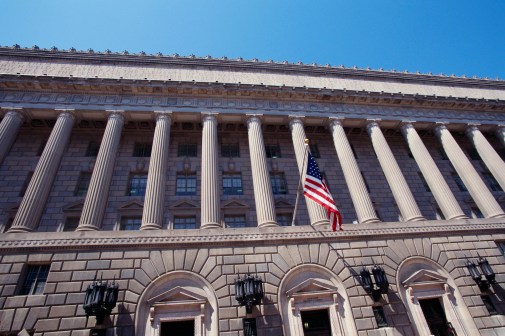As cloud computing use increases, so do organizations’ interest in accessing that technology from as many mobile devices as possible.
The National Institute of Standards and Technology Cloud Computing Program hosted “The Intersection of Cloud and Mobility” event yesterday, gathering government officials, industry and academics to talk about the two increasingly entwining trends.
The panel was made up of Dawn Leaf, deputy CIO at the Labor Department, Joseph Portale, chief technologist of mobility at Lockheed Martin, Bob Flores, chief technology officer at Applicology Inc., and Tim Bixler, manager of solutions architecture at Amazon Web Services. Jeffrey Schweitzer, chief innovation architect at Verizon Enterprise Solutions Group, moderated the discussion.
So, what does the future of cloud and mobility look like?
The mobility and cloud trends surfacing in the future indicate a shift toward the delivery of services, from a business model perspective, panelists agreed.
“That’s what I see as the biggest driver, not necessarily the technology, but the business model behind it,” Leaf said.
Bixler added that a new type of data architecture will become the government default — data that is open and machine-readable.
According to Portale, moving services to cloud and mobile is “step zero, not even step one.” The Holy Grail is being able to provide and support use cases for users who intersect mobility and cloud, providing a set of functions that can only be done on a phone.
It’s in agencies such as the Food and Drug Administration where evidence of successful cloud and mobile programs can be found, Portale said. For example, when food inspectors use mobile devices to report their inspections, information from those devices goes to the cloud. That data can then be used to draw connections to previous inspections, patterns, etc.
“I would like to see us spending as much time with the use cases that are only mobile, as we spend on use cases for moving email to the cloud,” Portale said.
Cloud and mobile technology also allow for innovation to occur in a much more rapid fashion than ever before, Flores said. Admitted, however, the “jury is still out” on whether it is cheaper.
Flores, who worked for the CIA for more than 30 years, said this shift has lessened some of the struggles IT management had in the past, when managing everything from the desktop to network infrastructure to the actual computer infrastructure. Now, managers can protect the data on a phone if it is lost or stolen, he said. If data is protected appropriately, those types of scenarios become far seldom an issue, according to Flores.
Leaf weighed in with a different perspective, that of a manager working in government. She said oftentimes, agencies use several different providers, which makes the environment harder to control.
“There needs to be interoperability,” Leaf said. “It’s not necessarily easier. It would be easier if providers were consistent, and that is not always the case.”
Leaf has worked with the Labor Department to increase its mobile and cloud capabilities, and the agency has migrated nine separate legacy email systems, as well as expanded employee email inbox storage by 400 times.
Cloud security was also a focal issue for panelists who emphasized the critical need to have systems in place that will ensure the security of data in the cloud, and cloud infrastructure, as well as data on mobile devices.
Portale identified situations such as the 2013 National Security Agency leaks, which he called an example of “three steps forward, five steps back.” He said that event led people to recoil from the cloud as an option, but the reality was that cloud expansion did increase following the leaks.
The “Intersection of Cloud and Mobility” will continue Wednesday and Thursday.






